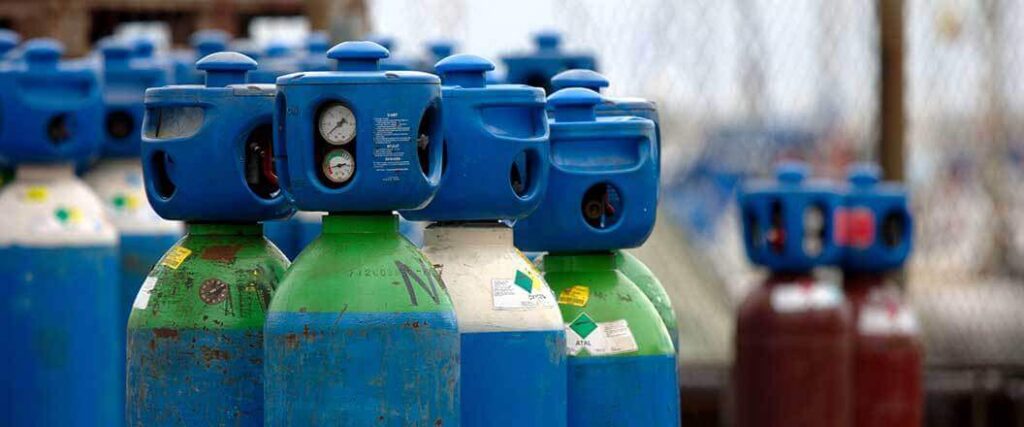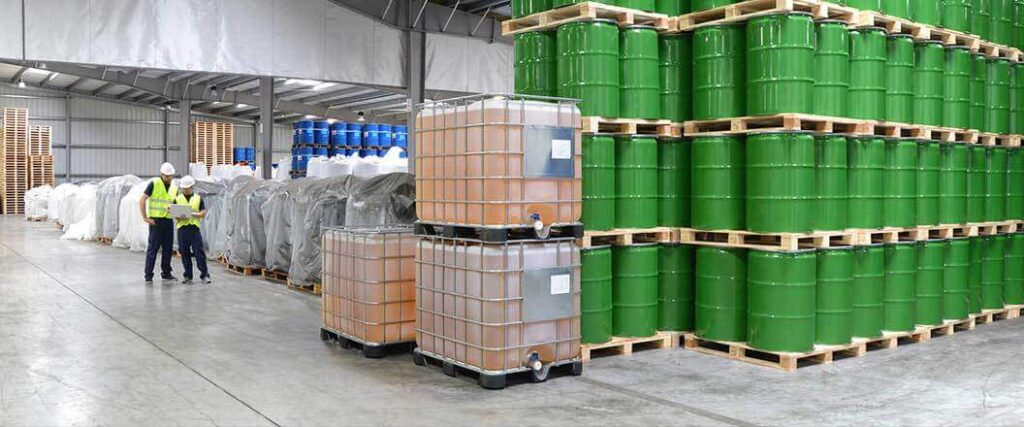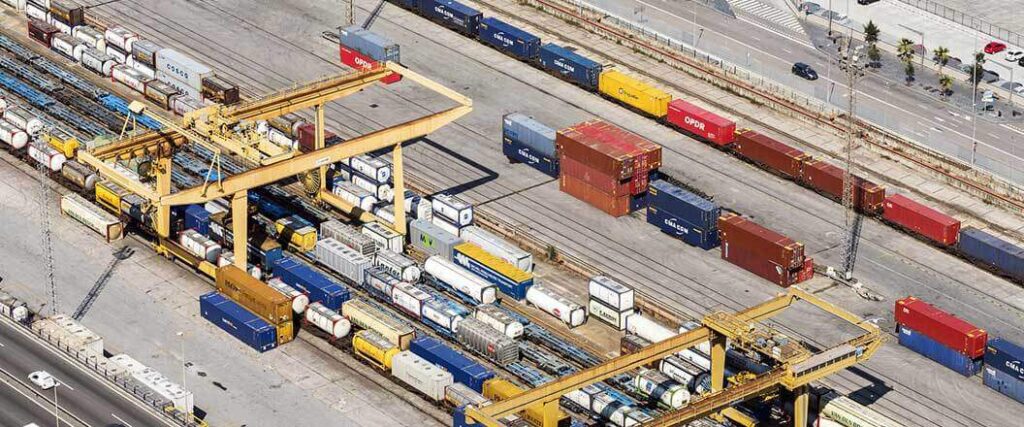The importance of ethylene exports from the U.S. has taken on new meaning in recent years. Industries producing everything from plastic bags to sneaker soles found themselves desperate for this crucial chemical. Learn more about this simple chemical and how to export it across the globe.
The U.S. Energy Information Administration (EIA) tracks ethylene-ethane exports in thousands of barrels shipped per day. Variations, such as ethylene oxide, are highly regulated by the Environmental Protection Agency (EPA). Ethylene and its derivatives are the most commonly used chemicals in the global plastics industry.
Gain an understanding of this invaluable chemical and its role in the global manufacturing market as a top U.S. export.
Ethylene, or ethane, was labeled as the “World’s Most Important Chemical” by Bloomberg and the American Fuel & Petrochemical Manufacturers trade association. For many years, the ethylene pipeline has been a part of several major industries.
Industries that often use ethylene or its derivatives in production include:
More so than natural gas or even crude oil, a lack of ethylene can cripple industries that the world has come to rely on for everyday items. This fact was confirmed in 2017 when Hurricane Harvey brought intense flooding to Houston, Texas. Factories there were responsible for over 60% of U.S. ethylene production.
From diaper manufacturers to textile mills, many found their own productions slowing down or stopping completely. They no longer had access to a reliable supply of ethylene.
The U.S. is one of the top five exporters of ethylene around the world. New exporters and those working within the petrochemical industry can learn the export process and see where rising demand is creating opportunities.

We’ve already seen that ethylene and its related compounds are used in many different industries. Ethylene has become so important because of how it adapts to the needs of many industries.
Before it was adapted for use in the petrochemical industry, ethylene was most often used in agriculture. The EPA classifies natural ethylene as nontoxic although products using it still need to register. It's vital to aid in ripening fruits and contributing to greater and faster yields. If you’ve enjoyed any fresh fruits lately, you’ve likely benefited from ethylene.
As far as chemicals go, it also isn’t difficult to manufacture. In fact, some ethylene gas actually occurs naturally from ethane. Industrial production is usually done through a process known as steam cracking. This process obtains ethylene from petroleum and natural gas.
It’s a high-energy process, but advances in technology have allowed crucial U.S. production centers along the gulf coast to better reduce related emissions.
In short, ethylene has many things in its favor. Direct benefits and uses include:
For these uses and more, demand for ethylene and its related compounds is growing. Everything from product packaging materials to automotive parts needs ethylene.
Ethylene itself is a base chemical compound. Much of its value in the chemical and industrial field comes from the ability to combine with other chemicals.
The three most common varieties of ethylene used in the manufacturing industry are:
Although they are all related to ethylene, export capabilities aren’t uniform. Import regulations in other countries might also vary. To get the most for your exports, there are different options to consider.
Let’s take a look at the benefits of exporting ethylene components to foreign manufacturing centers.

Ethylene oxide, also known as Oxirane, is similar to standard ethylene because they are both gases. The EPA strictly regulated how ethylene oxide is shipped because it’s been linked with cancer if too much is inhaled.
Industries that heavily rely on ethylene oxide include:
Within each listed industry there is potential for growth. No matter where you export to, there is likely to be an industry that needs ethylene oxide as an ingredient.
For exporters keeping an eye on their bottom line, this is important. Because of the risks and high prices related to shipping gas in bulk, you want to ensure it will still bring good business.
According to Statista, the global market value for ethylene oxide was $50.9 billion USD in 2021. Current projections place the value at $68.5 billion USD by 2029.
| Country | Import Value Growth |
| Chile | 278% |
| Poland | 106% |
| Germany | 42.2% |
| Indonesia | 329% |
| Turkey | 257% |
The actual value imported by these countries might be less than others, but there are opportunities for an exporter to get in at ground level.
Information on exporting to Germany is available through our process articles.
Unlike its base components, ethylene glycol is a liquid rather than a gas. It’s produced when ethylene oxide gas is mixed with water.
While it has just as many important applications, it’s also considered toxic and must be handled and shipped with care. As an ingredient in liquid products, ethylene glycol is treated as a hazardous material by the National Institute for Occupational Safety and Health (NIOSH).
Even so, it remains a key ingredient in two major industries. The first is plastic and polymer production.
Ethylene glycol is the main ingredient in PET, the world’s most common plastic. Combined with other chemicals, it forms a thermoplastic that is melted down and turned into countless items.
Products produced with PET include:
The list is pretty much endless. PET is actually recognized as one of the world’s most widely used materials, as well as one of the easiest to recycle - made possible by ethylene glycol. The advanced production techniques that go into producing PET neutralize the toxic properties of ethylene glycol.
Related to PET is polyethylene, more commonly referred to as PE. It’s also produced with ethylene glycol and shares similar popularity to PET in terms of applications.
The second major industry that uses ethylene glycol is mass transportation. The chemical is the main ingredient in several fluids used in the automotive, boating, and aircraft industries.
These include products such as:
Though the transportation industry may not produce these directly, it’s affected by their availability.
Minor industries to consider when looking for buyers of ethylene glycol include:
Exporters working with ethylene glycol can target overseas manufacturing in any of these industries. However, foreign tariffs on ethylene glycol tend to be higher when compared with other ethylene compounds.
There are ethylene glycol manufacturers in the U.S. that export the compound to a partner facility overseas. After commercial production is complete, they can then import the finished product for U.S. distribution.
This is one way that the U.S. has become both a top exporter and top importer of ethylene glycol.
| Country | Import Value in USD |
| China | $303 million |
| Mexico | $175 million |
| Turkey | $172 million |
| South Korea | $77.2 million |
| Belgium | $66.2 million |
In the same year, the U.S. actually ranked second globally for ethylene glycol exports, with exports valued at $968 million, a 40% increase from the output value the previous year. This is good news for exporters who want to make sure they are investing in a growing market with wide potential.
When produced as a liquid compound, ethylene dichloride shares many characteristics with ethylene glycol. One that concerns shippers is its continued status with the EPA as a hazardous substance.
Like its relatives, ethylene dichloride is the main ingredient in many manufactured products. Ethylene dichloride’s most common application is in polyvinyl chloride, used to make PVC pipes and many other materials.
In many ways, ethylene dichloride’s relationship to PVC production is like that of ethylene glycol and PET. It’s a driving force behind a material that has come to dominate many areas of the plastics industry.
Articles often made with PVC include:
As the uses and applications for vinyl products continue to grow, so too does the need for the materials used.
Unfortunately, as an export, it doesn’t carry quite the same demand. This is because the U.S. is currently the top producer of vinyl chloride. Most of the ethylene dichloride made in the U.S. is used in the American manufacturing industry.
You can make money exporting ethylene dichloride. In 2020, the U.S. exported $358 million worth, mostly to Brazil and Egypt. As a long-term investment for exporters though, that still represents a 23% drop from the previous year.
A better investment might be bypassing the ethylene dichloride market and working with PVC instead. According to GlobalNewswire, the U.S. PVC market worth is expected to grow to $105.8 billion by 2030 driven by rising demands in Asian Pacific markets.

To remain one of the leading exporters of ethylene-ethane in the world, the U.S. has invested heavily in its domestic production. The majority of ethylene production plants, often referred to as crackers, are located along the Gulf Coast in Texas and Louisiana.
Facilities in Texas, especially along the Houston ship channel and the Port of Corpus Christi, are responsible for most of the ethylene produced for export.
For starters, Texas is home to some of the largest petrochemical production companies in the U.S. running ethylene crackers.
These companies include:
These companies and others like them benefit from close proximity to several ports. Many ports along the Gulf Coast boast high numbers of crude oil imports. Crude oil is one of the primary ingredients needed to produce ethylene.
Since demand for ethylene jumped in 2014, these ports have been expanded to include ethylene-ethane export terminals. These export facilities are built to handle all types of ethylene produced in both gas and liquid forms.
These terminals are capable of handling millions of pounds of ethylene. They also have connections to ethylene pipelines that extend as far as Canada.
For example, the ethylene export terminal located in Morgan’s Point, Texas has access to pipelines that allow it to transport ethylene to a number of nearby ports. It’s also connected to an ethylene storage facility that can hold 600 million pounds of product.
If you’re planning to expand into ethylene exports from the US, there are few places to get a better start than East Texas. There are other ethylene crackers operating in places like Illinois and Pennsylvania, but they lack easy access to export facilities for overseas distribution.
Shipping chemicals for export falls under the jurisdiction of the EPA. Anyone planning to export ethylene or related chemicals must notify the EPA. In cases of export, the EPA notifies the importing nation.
The Toxic Substances Control Act (TSCA) includes a list of chemicals that are required to meet certain export regulations. Ethylene and its related compounds are a section 5 chemical on that list.
The official exporter must complete any TSCA export notifications. You are the official exporter if you:
Both the timing and information of the notice are important. The good news is that you don’t have to complete the process for every single exported shipment. EPA notices are only required before the first exported shipment goes out to a new country.
Perhaps you were shipping to a country but had to stop or switch for some reason and now want to export there again. Your EPA notice is still effective as long as it was filed before 2007.
The specific requirements of EPA notices include:
Since the notices have to fit a set time, you shouldn’t start the process until you have an official contract or agreement.
Once you send notice, the EPA takes the next step. Within days of getting the notice from you, the destination country gets an import notice. This notice includes:
Of course, this is just automated information. As an exporter, you need to check with the customs services in the destination country to make sure nothing else is needed.
As we’ve seen, different types of ethylene are more or less dangerous than others. You may have been exporting natural ethylene gas without an issue. If you switch to ethylene glycol, you may come up against other regulations.
Regulated products are tricky. It’s usually best to speak with an experienced cargo export consultant familiar with the legal and logistical aspects of ethylene exports from the US.

Many European countries are now getting their ethylene gas from the U.S., along with other related chemicals.
Belgium is actually the fastest growing importer of U.S. ethylene. In the first half of 2022, it received 61% of all the ethylene imported into the E.U. The total value actually put it ahead of Chinese importers, the former import leader.
While each member of the E.U. controls its own import market, efforts to standardize are making exports a little easier. The European Commission has two main bodies that perform similar roles to the EPA.
Since the CLP also has required labeling for products, exporters should pay close attention. Many warning labels between the EPA and CLP are similar, but you should still make sure. Wrong labels can cause holdups in customs clearance.
Exporters of ethylene glycol should also be aware of an antidumping (AD) duty that went into effect in November 2021 for U.S. exporters to the E.U.
Depending on the company and compound, ethylene glycol is subject to an AD duty anywhere from 3% to 60.1% of the U.S. price.
For more specific information on requirements for individual countries, it may be best to consult with an experienced cargo exporter. Duty payments can eat through profits if you’re careless about import laws.

When shipping ethylene, your methods will depend on which form of the chemical you’re working with. Standard ethylene and ethylene oxide are both gasses. Ethylene glycol and dichloride are liquids.
All forms of commercially produced ethylene and its related compounds are regulated. Exporters need to meet standards set by the:
Ethylene shipped by ocean vessels must also meet the safety standards of the International Maritime Dangerous Goods (IMDG) code.
Ethylene gasses are liquified through pressure, refrigeration, or a combination of both to make them safe to ship. Special vessels, called gas tankers, are designed to handle these tasks.
There are four ways ethylene gas is shipped overseas.
The best storage methods for pressurized ethylene are spheres and cylinder tanks. Both the pressure and refrigeration needed to keep ethylene contained raise the risk involved in shipping them.
Specific regulations for cylinder tanks, fill methods, and safety backups are detailed in 49 CFR 173.301 & 323. If you are transporting ethylene oxide, there are more requirements to make sure the transporting crew and surrounding environment are safe.
Shipping directions specific to ethylene oxide include:
Chances are, you’ll need to work with a cargo carrier that works with LNG vessels and is familiar with the many requirements of transporting hazardous cargo.
Shipping the liquid forms of ethylene is a little easier because it doesn’t need to be kept at the same high pressure as the gasses do for transport. However, ethylene glycol and dichloride still fall under 49 CFR 171 for rules on HMRs.
Common transport methods of liquid ethylene products include:
Ethylene glycol and dichloride are safe to transport in plastic tanks as well. Depending on your source, you can have these products transloaded into a variety of storage solutions.
You also want to make sure that unloading and distribution at the destination are kept simple. If you know your buyer prefers to receive drums of product, then drumming your product before it leaves could save you time overseas.
No matter which packaging you choose, follow all the required labeling and documentation required by the IMDF code for international shipping.
With the many dangers and regulations involved in ethylene exports from the US, is it really worth it? According to a variety of market forecasts, it’s actually one of the better investments you can make right now.
Let’s take a look at some current trends that show industry growth. According to the EIA, exports of ethane-ethylene went from just 453,000 barrels in 2014 to 4.421 million barrels in 2021. In terms of value, it went from a $10 million industry to a $400 million industry in less than ten years. Clear evidence of growth, and that’s just in the ethylene gas market.
Between the demand for plastic packaging material and the increasing number of auto parts made with PE, ethylene looks to remain a priority trade item. Too many refined products need it for it to die down.
Even in 2020, a year when most markets lost production, ethylene still went up.
A report by Market Research Future (MRFR) predicts that the global market for ethylene will be worth over $172 billion by 2030. If that sounds like something you want a share in, ethylene exports might just be in your future plans.
Working within the global supply chain industry comes with significant risks - but potentially high rewards too. You can enter the field of ethylene exports with confidence when you have the expertise of our team at Cargo Export USA backing you up.
Our export consultants have helped ship goods all over the world. Yours could be next. Ship with confidence when you partner with Cargo Export USA.
To help make your next export venture a success, consider using the following services:
Call us today at 866-301-0635 to speak directly with a representative or request a services quote online now.